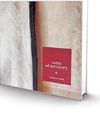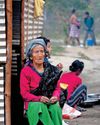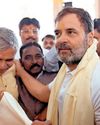
IN THE SONG of Solomon, Nobel laureate Toni Morrison wrote, “If we do not create the future, the present extends itself.” As we envision India’s health in 2047, we must take stock of our present health status, evaluate the progress made since independence, anticipate the changes in population health needs and health system capabilities over the next quarter century and draw upon the distillate of that analysis to design a path to the future we seek.
India is now the most populous country. The demographic dividend of a young population, available for the next 25 years, demands investments to keep the population healthy and productive as it ages. The United Nations Population Fund forecasts that the number of persons aged over 60 years will grow from 153 million now to 347 million by 2050. Can we ensure healthy ageing, where people will remain fit and functioning rather than frail and feeble? Otherwise, we will have a cascade of chronic non-communicable diseases and mental health disorders.
Health threats posed by climate change, environmental pollution and loss of biodiversity will escalate over the next quarter century. Our health system has to withstand this fusillade. Future pandemics are high probability events. Microbial surveillance must now extend across several species. New vaccines and drugs must be developed within the country owing to the fragility of global supply chains during public health emergencies.
Denne historien er fra August 18, 2024-utgaven av THE WEEK India.
Start din 7-dagers gratis prøveperiode på Magzter GOLD for å få tilgang til tusenvis av utvalgte premiumhistorier og 9000+ magasiner og aviser.
Allerede abonnent ? Logg på
Denne historien er fra August 18, 2024-utgaven av THE WEEK India.
Start din 7-dagers gratis prøveperiode på Magzter GOLD for å få tilgang til tusenvis av utvalgte premiumhistorier og 9000+ magasiner og aviser.
Allerede abonnent? Logg på

Use multi-asset investing to overcome portfolio volatility
EQUITY MARKETS have been choppy during this year. After rallying for the better part of the first nine months of 2024, equities corrected sharply in October and November, before taking off once again on rally mode in December.

Twist of faith
Upamanyu Chatterjee is back with his wry sense of humour in his new novel, and most of it is directed at religion and spirituality

THE GLORY OF SARI
Saris of Memory weaves together history and textiles, highlighting key moments from the author's collection

We win together
We invented chess, which was pretty cool of us. The original game 'chaturanga'that is four divisions (infantry, cavalry, elephantry and chariotry)-was a war strategy game. When the game travelled to the Middle East, they mangled the Sanskrit and it ended up being called 'shatranj' instead.

BEATS THAT HEAL
Music ignites the light within us, says Grammy-winner Chandrika Tandon

Older, smarter, sexier
Those who worship him regardless of where he works have continued to do so. Such is the power of Alessandro Michele, that after being the face of some mega brands for 10 years (namely Gucci and now Valentino), he remains bigger than the labels themselves. His debut collection for Valentino was presented at the recent Paris Haute Couture Week, and it has been adored by his adorers.

The road to peace
Future political dialogues should explore means of ensuring a more robust autonomy to tribal communities

Diary of a Sherpa
Amitabh Kant's new book is a comprehensive account of the G20 Summit held in Delhi in 2023

The annoying orange
Everything is great. All is sunshine. I am an eternal optimist.\" It's the fad of our TikTok times everything is not great, the sun sets daily, nothing is eternal. If anything, everything is ephemeral, night brings darkness, and optimism often crumbles under the weight of history. British philosopher Roger Scruton warned: \"Hope untempered by the evidence of history is a dangerous asset, one that threatens not only those who embrace it, but all those within range of their illusions.\"

NO SEAT, YET UPBEAT
The Congress is buoyed by its increased vote share in Delhi, and feels it can push the AAP into further decline
